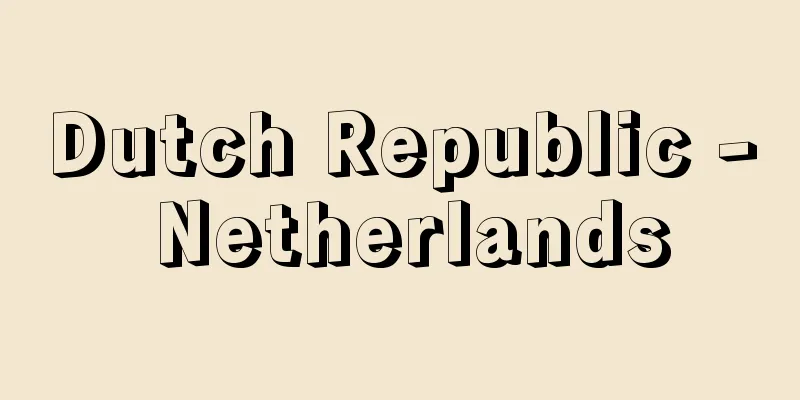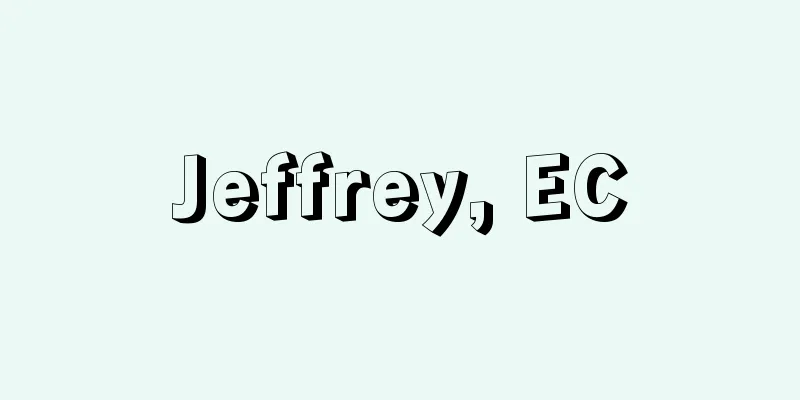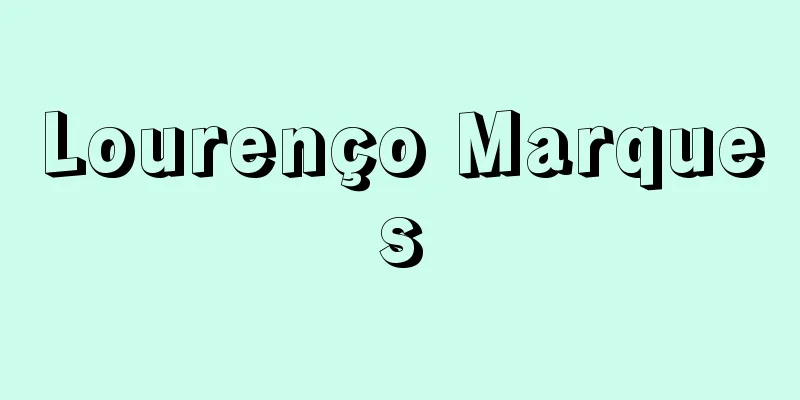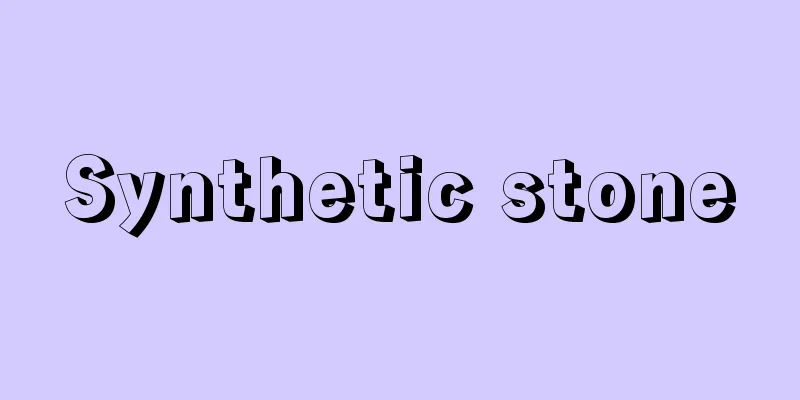Norway - Norwegian (English spelling)
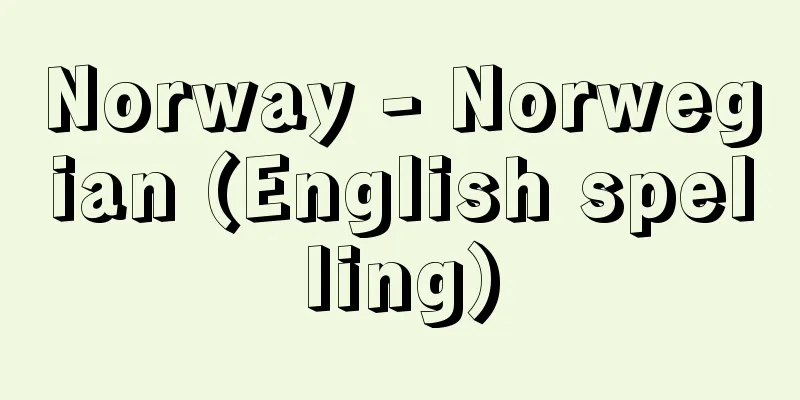
|
A constitutional monarchy in Northern Europe. Norge in Norwegian means "Northern Road". The official name is the Kingdom of Norway (Kongeriket Norge). It occupies the western half of the Scandinavian Peninsula, about 40% of the peninsula's area. It borders Sweden, Finland, and Russia to the east, and is otherwise surrounded by the Barents Sea, Norwegian Sea, North Sea, and Skagerrak. Its area (excluding overseas territories) is 323,802 square kilometers, and its population is 4,520,947 (2001 census), 4,661,000 (2006 estimate). Its capital is Oslo. It stretches between 57°57'33" and 71°11'8" north latitudes in the high latitudes, and almost the center to the north is included in the Arctic Circle. The summer within the Arctic Circle is well known to travelers as an area of the white nights, also known as the "midnight sun," but in winter the sun does not rise for several days at a time. Only 3% of the country's land area is farmland, 26% is forest, and about 70% is lakes, marshes, glaciers, and rocky mountains. There are also well-developed fjords (narrow bays) that are traces of the Ice Age, and there are about 50,000 islands, and the total length of the coastline is estimated to be 35,800 km, more than three-quarters of the circumference of the Earth. Overseas territories include Svalbard and Jan Mayen Island. The national flag is a cross flag called the "Scandinavian Cross" like Sweden and Denmark, but the color is different from other countries, with a navy blue cross with a white border on a red background. The national anthem "Ja, Vi Elsker Dette Landet" (Our Beloved Mountain Land) was established in 1864. [Kiyofumi Takeuchi] NatureGeology and topographyThe only area in which the Precambrian crystalline rocks known as the Fennoscandian Shield are distributed is the southeastern region and eastern Finnmark in the north. In the remaining wide area, rocks deposited during the Cambrian period and other periods formed a folded mountain range as a result of the Caledonian orogeny in the mid-Palaeozoic era, and the Caledonian Mountains were subsequently eroded, uplifted, and glacialized to form the present-day topography. The Norwegian mountains are not very high, with an average altitude of about 500 meters, and are generally plateau-like. The plateau-like peaks over 2,000 meters are covered with perpetual snow and ice, and in some places steep valley glaciers hang down from the edge of flat plateau glaciers into the valleys. The ice sheets that covered the Scandinavian Peninsula during the Quaternary Ice Age left traces of glacial erosion not only on the mountains but also on the plains. In Norway, they created long and narrow fjords and deep U-shaped valleys that lead to them. In the west in particular, the cliffs on both sides that are several hundred meters high and the hanging valleys where river water falls as waterfalls create a magnificent landscape. The longest fjord is Sognefjord, which quietly flows blue-green water all the way to the innermost part of the bay, which is over 200 kilometers long. [Kiyofumi Takeuchi] Climate and vegetationDespite its high latitude and extremely weak winter sunlight, the average temperature in Bergen on the west coast during the coldest month (January) is 1.3 °C, about the same as that in Sendai (Miyagi Prefecture) in Japan. In summer, the average temperature in the warmest month (July) is very cool, at 14.3 °C. However, a notable feature is the large annual variation, with some years experiencing very hot summers and others very cold winters. Precipitation is highest on the southwest coast, with Bergen receiving 2,250 mm of rain per year and 244 days of rain in 2007. It decreases as you move north and inland, with Oslo receiving only 763 mm of rain per year. In Norway, where forests cover about a quarter of the country, the predominant tree species are fir and pine. The vegetation is most lush in the southeast. [Kiyofumi Takeuchi] GeographySoutheast RegionThe region is made up of large river basins, including the Gramå River (598 km long), which flows into the Oslofjord. The forest area accounts for about 60% of Norway's total forest area, and felled timber is transported downstream to sawmills, pulp and paper mills. The plains in the middle and lower reaches are covered with fertile soil, making it Norway's richest agricultural region. In addition to growing grains such as barley, vegetables and fruit, dairy farming and pig farming are also thriving. The abundant water power from the electricity supply and the deep fjord coast have led to the development of industries such as chemicals, electrometallurgy, shipbuilding and pulp. As a result, the capital Oslo and cities such as Drammen, Skien and Fredrikstad, which line both sides of the Oslofjord, have grown to form Norway's largest industrial region. [Kiyofumi Takeuchi] SouthwestfjordsFjords are found all along the coast of Norway, but the southwestern coast is particularly famous for the country's longest fjord, Sognefjord, as well as Hardangerfjord and Nordfjord. At the mouths of the fjords, large and small, are Norway's second largest city, Bergen, as well as cities such as Kristiansund, Ålesund and Stavanger, all of which depend on sea-related industries such as fishing, shipbuilding and trade. In recent years, the population has increased significantly with the development of the North Sea oil fields. In addition, industries such as chemicals and metal refining, which utilize abundant hydroelectric power, have developed towns at the innermost parts of the fjords, such as Årdal and Odda. [Kiyofumi Takeuchi] Treinela RegionAround the Trondheimsfjord, there are cultivated fields where barley, potatoes, and fruit trees are cultivated, and forests of pine and fir trees spread out. To the south are mountain ranges over 1,500 meters high, such as Dovrefjell and Trollheimen. To the north, towards Namsos, there is a beautiful coastline with many inlets and outlets, and a rich variety of scenery unfolds. Trondheim, Norway's third largest city (after Oslo and Bergen), developed at the mouth of the Nid River on the southern bank of the Trondheimsfjord and was the country's capital until the 13th century. [Kiyofumi Takeuchi] Northern NorwayMost of the area lies within the Arctic Circle, and the towns of Bodo and Tromso are bustling with tourists who come to see the "midnight sun" for a few weeks in summer. People in the north work in cod fishing near the Lofoten Islands and deep-sea herring fishing. After World War II, hydroelectric power generation and iron mines were developed, and a large steelworks was built in Mo i Rana, bringing with it a wave of industrialization. It is also important to remember the city of Narvik, an export port for iron ore from the Kiruna mines in Sweden, and the lives of the indigenous Sámi people, who make a living by herding reindeer. [Kiyofumi Takeuchi] historyBefore the Kalmar UnionThe first inhabitants of Norway were immigrants from the south around 10,000 BC, but between the 15th and 3rd centuries BC the country was influenced by Sweden and Denmark, and from around the 1st century BC Roman culture began to flow in. By the 8th century the country had formed communities and split into tribes, but around 890 King Harald Hårfager (885?-931?, reigned c. 890-c. 940) unified the country. It later split up, but was reunited by Olaf II (Holy King, reigned 1015-1028), who was an enthusiastic propagandist. The Norwegian throne was temporarily (1028-1035) subject to Danish rule by King Cnud the Great and others, but it was restored by King Magnus den Gode (1024-1047, reigned 1035-1047). After his death, divisions and civil wars continued again, but after King Sverre (reigned 1184-1202) established the system of primogeniture, medieval Norwegian monarchy reached its zenith during the reign of his grandson, King Haakon Håkonsson (1204-1263, reigned 1217-1263). Pope Magnus Lagabøte (1238-1280, reigned 1263-1280) created a national law code, but from this time German merchants, who controlled the grain supply, made significant inroads, and relations with the kingdoms of Sweden and Denmark became important. After a personal union with Sweden (1319-1343), Olaf IV (1370-1387, reigned 1380-1387), the son of Haakon VI (1340-1380, reigned 1343-1380), became King of Denmark in 1375, and succeeded him as King of Norway after his father's death (1380), entering into a personal union with Denmark that lasted for 434 years. [Akihisa Arakawa and Masato Murai] Danish influenceIn 1397, Olaf's mother, Margrethe, became ruler after Olaf's death and organized the Kalmar Union, a personal union of Denmark, Sweden, and Norway. From then on, Norway was gradually incorporated under Danish influence, and under the rule of Christian III (1503-1559, reigned 1534-1559), Norway was legally treated as a full Danish province. Thus, the Reformation of 1536, which stipulated the confiscation of church land and property, became a means of expanding Danish control, and the following year, with the exile of Catholic Archbishop Olaf Engelbriktsson (date of birth and death unknown) of Nidaros, the Catholic power in Norway was completely defeated. Also, with the decline of the Hanseatic trade, trade in timber and dried fish with countries such as England and the Netherlands promoted economic prosperity. The Danish absolute monarchy, established under the rule of Frederick VI in 1661, brought centralization to Norway with the "Norway Act" of Christian V (1646-1699, reigned 1670-1699) in 1687. In the second half of the 18th century, the country became more self-sufficient, and the maritime nation of Norway prospered due to the Danish government's "neutrality" in the wars that took place in Europe, and the momentum for independence from Denmark grew. Following Denmark's defeat in the Napoleonic Wars, Norway was released from Denmark by the Treaty of Kiel (1814), but in the text it was ceded to the Swedish king, and the independence struggle was easily suppressed, and Norway moved into a personal union with Sweden (1814-1905) (Treaty of Moss). During that time, Norway gained autonomy except for foreign affairs and defense based on the liberal Eisborg Constitution and the "Union Act" that were established. [Akihisa Arakawa and Masato Murai] Independence and neutrality policyThe conflict between the intellectual class and the peasantry manifested itself culturally as a conflict between those who inherited Danish culture and those who revived Norwegian culture, and politically as a conflict between the right and the left (the Left Party). The Left Party government came to power in 1884, parliamentarianism was established, universal suffrage was granted in 1898, and women's right to vote in national politics was granted in 1913. In 1880, Norway became the world's third largest merchant ship-owning nation, and demanded its own consulate, seeking a resolution to this issue, becoming an independent nation in 1905. Prince Carl was welcomed from the Danish royal family, who became King Haakon VII (1872-1957, reigned 1905-1957). During World War II, Germany's neutrality policy was broken by Nazi Germany, so after the war, while it maintained its neutral orientation, it joined the United Nations in 1945 and NATO (North Atlantic Treaty Organization) in 1949, and economically joined EFTA (European Free Trade Association) in 1959. [Akihisa Arakawa and Masato Murai] PoliticsPolitical systemNorway is a constitutional monarchy, and the current King Harald V (1937-, reigned 1991-) ascended to the throne in 1991. The current constitution is based on the Eidsvoll Constitution (established in Eidsvoll, about 48 km north of Oslo), which was enacted in 1814 and has been amended several times. The parliament is called the Storting (meaning "parliament"), and it was a bicameral system in which one-quarter (42 seats) of the 169 members constituted the Lagting, which was the first chamber, and the remaining members constituted the Odelsting, which was the second chamber. However, the constitution was amended in February 2007, and after the parliamentary elections in September 2009, the first chamber was abolished, the irregular bicameral system was eliminated, and a unicameral system was transitioned to. The cabinet consists of the prime minister and 16 ministers. Parliamentarians serve a four-year term, with between four and fifteen representatives elected by proportional representation from 19 constituencies across the country. Voting rights are granted to all Norwegians aged 18 and over, and eligibility to run for office is granted to citizens aged 18 and over who have resided in Norway for ten years or more. Since 1983, voting rights have been granted to foreigners who have resided in Norway for three years or more, but only in local elections. The major political parties, in order of the number of seats they won in the 2005 general election, are the Labour Party, the Progress Party, the Conservative Party, the Left Socialist Party, the Christian Democrats, the Centre Party, and the Liberal Party. Since 1935, the Labour Party has been in power, either alone or in coalition, but since the late 1970s, the Conservative Party has gained seats due to the oil boom, and in 1981, a conservative coalition government led by Kåre Willoch (1928-2021) was formed. However, after that, amid a close contest between conservatives and progressives, minority parties held the casting vote over issues such as EC (European Community) membership and budgetary issues, and the government changed rapidly, with a minority Labour Party government led by Jan Peder Syse (1930-1997) in 1989, and the return of the Labour Party government in 1991. Bruntland retired in 1996, and Labour Party's Thorbjørn Jagland (1950- ) became prime minister. However, in the general election of September 1997, the Labour Party lost opposition after receiving a lower percentage of the votes than in the previous election. In October, a centrist coalition government consisting of the Centre Party, the Liberal Party and three other parties, led by Kjell Magne Bonddevok (1947-) of the Christian Democrats as Prime Minister, was formed, resulting in a minority government with 25.5% of the seats in parliament. In March 2000, a motion of confidence in the cabinet was rejected, and the Bonddevik cabinet resigned. Jens Stoltenberg (1959-) of the Labour Party became Prime Minister, and the Labour Party became the sole minority government. In the general election of September 2001, the Labour Party became the largest party, but its number of seats dropped sharply to 26% from 39.4% in the previous election. As a result, in October, the Stoltenberg cabinet resigned, Bonddevik of the Christian Democrats returned to power as Prime Minister, and a centre-right coalition government consisting of the Conservative Party, the Christian Democrats and the Liberal Party was formed. In the general election in September 2005, the Labour Party, which advocated improving education and social welfare, became the largest party and formed a coalition government with the Left Socialist Party and the Centre Party, with Labour's Stoltenberg once again becoming prime minister. [Miho Oshima] Local GovernmentThe local government is made up of 19 counties (fylke) and 434 municipalities (communes) below them, but because the county governor is an official appointed by the Cabinet, the authority of the county council is significantly limited, and it is the municipal councils that carry great importance. Municipal councils are made up of 13 to 85 members, who serve four-year terms, and also elect the members of the administrative committee and mayors who form the executive branch. [Miho Oshima] DiplomacyForeign policy was not formally developed until Norway gained independence in 1905. Due to its long history of being dominated by other countries, Norway has been particularly careful to maintain its own sovereignty. When Norway joined NATO in 1949, it did so on the condition that it would not allow foreign military bases to be established in peacetime, and in 1962 it was guaranteed that nuclear weapons would not be brought into the country. Norway also held two national referendums on EC membership, in 1972 and 1992, and the majority of voters opposed membership, fearing restrictions on sovereignty and the impact on fishing, agricultural and welfare policies, won. On the other hand, Norway has been active in cooperation with other Nordic countries and in regional cooperation in the northern Barents and Baltic Sea regions, and has made significant international contributions, such as economic assistance to the Third World and activities in the United Nations. Norway is also active in peace activities, contributing to the ceasefire of the Sri Lankan civil war in 2002 and the establishment of the Convention on Cluster Munitions in 2008. [Miho Oshima] defenseDuring the Cold War, Russia was in a strategically important location for the US and the Soviet Union, and the border area with the Soviet Union facing the Arctic Ocean was in a particularly delicate position. However, after the end of the Cold War, Russia moved towards arms reduction in line with NATO policy. Conscription was introduced, and men aged 18 (those who will turn 19 that year) to 44 are obligated to serve in the military for 12 to 15 months. The current military strength is 14,700 in the army, 6,400 in the navy (number of officers), and about 7,900 in the air force (1996), and there is also a homeland defense force made up of reservists, rear-guard soldiers, and volunteers. [Miho Oshima] Economy and IndustryIn the 19th century, Norway's economy was mainly based on agriculture, forestry and fishing. In the 20th century, industry gained importance and became the most important industry after World War II. The expansion of industry was primarily based on cheap water power, but also on the increased exploitation of natural resources such as fish, timber, oil and minerals. [Kiyofumi Takeuchi] Agriculture, forestry and fisheriesAgriculture is mainly carried out in the Oslofjord in the southeast, around Trondhjelmsfjord in the middle west coast, and in the Jären region on the southwest coast, where the soil conditions are good despite the harsh climate. Although arable land accounts for less than 3% of the country's land area, mechanization, rational farming efforts, and the government's agricultural promotion policies have helped agriculture to develop into a relatively productive industry. Approximately 68% of agricultural income comes from livestock products such as raw milk, cheese, butter, meat, and eggs, and barley, potatoes, fruits, and vegetables are grown on arable land. Approximately 90% of the timber produced from the forests that cover one-fifth of the country's land area is coniferous, and in 1995, 9.34 million cubic meters of timber, including other tree species, were felled. Timber was Norway's main export until the early 20th century, when it was replaced by pulp and paper, which have higher added value. The fishing industry covers the North Sea, one of the four largest fishing grounds in the world, as well as the wide waters of the North Atlantic, with the main species being cod, mackerel, shrimp, and herring, with a total catch of 2.34 million tons (1994). In addition, salmon and rainbow trout farming is developing rapidly. Shishamo fishing, which began in the 1970s mainly for export to Japan, was temporarily banned to protect the resource, but was resumed in 2009. [Kiyofumi Takeuchi] Mining and EngineeringIndustry is Norway's most important economic activity. Paper products such as pulp and newsprint, fish processing such as fish oil and canned goods, electrochemistry such as nitrogen fertilizers using cheap electricity, and electrometallurgy such as aluminum and nickel have developed as export industries. Industrial sectors such as machinery, steel and metalworking have developed mainly for the domestic market. Recently, there has been remarkable growth in the electrical machinery industry, as well as in the machinery for ships and oil drilling. Energy consumption was 20.17 million tons (oil equivalent, 1992), of which 46% was hydroelectric and 40% was oil. 99.6% of electricity is hydroelectric, and the per capita electricity generation is 28,000 kilowatt-hours, the highest in the world. In 1970, an offshore oil field was discovered in Ekofisk, Norway, in the North Sea. Production began in 1972, and by 1983, about 30 million tons had been produced (Ekofisk oil field). At that time, due to environmental and safety concerns, parliament set a production limit of 90 million tons of oil (including natural gas) per year, but as of 1995, the country produced 139.2 million tons of crude oil alone. Other mineral resources include iron, copper, nickel, zinc, and lead ores. The iron ore mines south of Kirkenes, near the Russian border in the north, are particularly important. [Kiyofumi Takeuchi] TradeNorway's high standard of living is supported by trade. In 1994, per capita trade, including exports and imports, was $14,073, ranking sixth in the world excluding the oil-producing countries of the Middle East with small populations, and the country's dependence on trade is high at 57.6%. Furthermore, exports grew 7.5 times in the decade from 1970 to 1980. This was brought about by the expansion of exports of petroleum and petroleum products as the development of the North Sea oil fields progressed, and the country continues to have an export surplus. In terms of export structure, crude oil, natural gas, and petroleum products account for 47.1%, followed by machinery, transport machinery, non-ferrous metals such as aluminum, processed fishery products, and paper products such as newsprint (1995). By region, the figures are 19.8% from the UK, 12.7% from Germany, and 9.8% from Sweden (1995). On the other hand, imports include machinery, transport machinery, manufactured goods such as steel and textiles, petroleum and petroleum products, and are imported from Sweden, Germany, the UK, and other countries. [Kiyofumi Takeuchi] trafficSince independence, the country has been cultivating its shipping industry, but its merchant fleet suffered heavy losses during World War II. In 1995, the country's merchant fleet was 21.55 million gross tons, down from 4th in the world in 1975 to 6th. Most of the country's merchant ships are engaged in foreign trade, and tankers, which account for 40%, operate on the world's oceans under long-term contracts with major oil companies from the United States and the United Kingdom. Road transport was difficult due to the rugged terrain, but with the advancement of civil engineering technology, road construction has progressed, including the construction of bridges over islands and fjords. In 1995, the total length of public roads reached 90,262 km, forming an important transport network. The national railway, which laid the first railway line in the early 1850s, runs from Oslo to Bodo in the north, Bergen in the west, and Stavanger in the south, bypassing the coast. The total length is 4,025 km (1995), and the electrification rate is 60.2%. Domestic air routes are operated by four companies, including Scandinavian Airlines and Broten Airlines, and are particularly important as a means of transport that quickly connects the Arctic Circle and various islands. In 1998, Oslo International Airport was newly developed as a modern airport with two runways, 50 km from the city center. There are many coastal shipping routes for maritime traffic, but the route that runs from Bergen to the northernmost town of Kirkenes, which takes seven days to travel, still plays an important role in the lives of people along the coast. [Kiyofumi Takeuchi] societyPeople and LanguageMost of the Norwegian population is of Germanic descent, but there are about 25,000 Sami people in the north and about 7,000 Finns called kven living in Finnmark. The Sami are a nomadic people who used to herd reindeer, and after a long period of legal discrimination, they were granted the exclusive right to breed reindeer, but today the majority of them are engaged in agriculture or fishing. In addition, a public organization was established to protect the Sami culture, and it is now legally mandatory for parents to use the Sami language in public education for their children if they so wish. So far, no public measures have been taken for the kven. The official language is Norwegian, with two other languages recognized as standard: Bokmål (Bokmål) and Nynorsk (New Norwegian), and both must be used in official documents and in compulsory education. Bokmål has national influence and is used in local councils and schools, particularly in the eastern part of the country, while Nynorsk is more widely used in the western part of the country. Politically, the former is preferred by conservatives and the latter by progressives, and neither is uniform, with differences in the language known as conservative and progressive forms. There are also dialects with different written forms in each region, which can be roughly classified into more than ten, and are used freely in public broadcasting, newspapers, and magazines, reflecting the public's demand for rejecting the standardization of the language. [Miho Oshima] National LifeApproximately 75% of the population lives in urban areas. The population growth rate has been declining year by year, and the proportion of people aged 60 or over has doubled in the last 100 years to 27%. The gross domestic product is $82,465 per capita (2007), and the standard of living is high. The unemployment rate was only 1.7% in 1980, but rose to 5.9% in 1992 and 3.4% in 2000. The price index has risen significantly, reaching 180 in 1992 with 1980 being 100. The consumer price index in 2000 was 3.1%. [Miho Oshima] Education and ReligionNorway's efforts to promote equal opportunities in education began early on, with the Local Education Act being enacted in 1737. The number of years of compulsory education was standardized nationwide in 1827, and in 1936 the education system, which had previously been divided into two parts reflecting differences in social class, was unified. Compulsory education was set at nine years by a 1969 law, but in 1997 the education system was revised to 10 years (seven years of primary school and three years of junior high school) from age six. Secondary education was unified in 1974 into a gymnasium (general secondary school) for general education and seven types of vocational training schools (each with one or two years of basic and advanced courses). Higher education institutions (universities or prefectural colleges) are open to all citizens who pass a qualifying examination. Adult education is also popular, with about half of the population attending private education provided by about 30 associations and clubs with government funding, and the traditional national high school. The state religion is Evangelical Lutheranism, with around 96% of the population belonging to the Church of Norway (95% in urban areas and 97% in rural areas). Other minority religions include Judaism, the Evangelical Lutheran Free Church, and Methodism. [Miho Oshima] welfareWelfare policies, characterized by the slogan "Helping those who help themselves," which was adopted in the 1960s, are being developed through close information exchange and cooperation with other Nordic countries. With regard to medical care, compulsory disease insurance is in place for all residents, and there is a compulsory health care system, especially for school children. Social insurance includes work-related accident insurance, which is financially borne by employers, and nationally compulsory unemployment insurance. There are also child allowances for children under 16, and various pensions, including an old-age pension that guarantees two-thirds of pre-retirement earnings. For the physically disabled, widows, and unmarried mothers, detailed measures are taken, such as the construction of education and training facilities by the state to help them find employment, in addition to providing pensions. [Miho Oshima] cultureDue to the mountainous, elongated, and narrow terrain that tends to isolate areas, the country has a strong tradition of regionalism, and various cultural, sports, and social activities are carried out through local private organizations. Sports activities, such as skiing, skating, and soccer, are particularly popular, and the Norwegian Sports Association has 2,700 clubs with approximately 330,000 members, making it a large organization on a par with a labor union. Incidentally, the Nobel Prize is selected mainly in Sweden, but the Nobel Peace Prize is awarded by a five-member committee selected by the Norwegian Parliament. [Miho Oshima] Cultural FacilitiesOslo alone is home to over 10 museums, including the National Gallery and the Munch Museum, as well as history and craft museums, and there are as many as 460 museums across Norway, reflecting the rich local color of the country. The 1947 amendment to the Library Act made it mandatory for all local governments to establish public libraries. There are 1,214 public libraries (1992), and municipalities with a population of 8,000 or less receive a state subsidy of 10 kroner per resident, and large cities receive 5 kroner. Mobile libraries are provided by bus and boat to remote areas. [Miho Oshima] artNorwegian literature has a tradition of epic poetry based on ancient Nordic mythology and sagas, and after medieval folklore and the creative activities of court poets, the 19th century saw the birth of works that became known as "national literature." In the first half of the century, Wergeland worked to eliminate Danish influence in language and literature, and his poetry influenced later generations. In the second half of the century, during the period of national romanticism, Ibsen and Björnsson were highly regarded as writers who produced uniquely Norwegian plays, and many of their works have been translated overseas. Björnsson won the Nobel Prize in Literature in 1903, and Hamsun and Undset also won the same prize in 1920 and 1928, respectively. Grieg, who composed Ibsen's "Peer Gynt" during the same period and is famous in the field of music, also composed works based on rural folk songs and dances in a way that was linked to the national romanticism movement. Art and crafts were able to see the excellent ancient sculpture techniques of ancient times on existing Viking ships, and the modern sculptor Gustav Vigeland (1869-1943) is famous. Munch, who has been known worldwide since the late 19th century as the "founder of Expression." [Miho Oshima] Speech and PublishingFreedom of speech and expression was clearly stated in the Constitution in 1814 in the Iceborg Constitution, drafted by the Norwegians themselves, but was subsequently oppressed under Swedish rule, and it was not actually recognized in 1840. 5,580 books were published per year (2002), and some became world-class bestsellers, such as J. Goldell's World (1952-) Jostein Gaarder's World. There are 77 daily newspapers, with a total circulation of 2.27 million copies (2006). For a long time, only one national broadcaster had been broadcasting station, but in 1981, private broadcasters began to enter the country, and local radio stations and cable television were established. [Miho Oshima] Relations with Japanになったんです。 English: The first thing you can do is to find the best one to do. Meanwhile, Norway's separatism from Sweden in 1905 cannot be discussed without the influence of the Russo-Japanese War (1904-05) that had on European international relations. Norway's move to independence, which also lays the possibility of a war against Swedish that could lead to Russian interference, took place under the special circumstances of the Baltic Fleet's absence due to the Eastern expedition and the subsequent defeat of Russia. になったんです。 English: The first thing you can do is to find the best one to do. になったんです。 English: The first thing you can do Meanwhile, King Haral V has also visited Japan frequently, including visiting Japan as a state guest in 2001. [Murai Masato] World Heritage RegistrationIn Norway, the Wooden Church of Urnes (1979, cultural heritage), Bliggen (1979, cultural heritage), Leros Mining City and its Surroundings (1980 and 2010, cultural heritage), the Rock Art of Alta (1985, cultural heritage), Vegaoyan/Vega Islands (2004, cultural heritage), West Norwegian Fjords: Geirangerfjords and Neroyfjords (2005, natural heritage), the Triangular Arch Observation Point Group of Strube (registered in 10 countries; 2005, cultural heritage), and the Industrial Heritage Group of Leukan and Notden (2015, cultural heritage) are registered as World Heritage Sites by UNESCO (UN Education, Scientific and Cultural Organization). [Editorial Department] "World Geography 6: Europe I" edited by Kiuchi Shinzo (Asakura Shoten)" ▽ "Momosehiro, World Modern History 28: Scandinavian Modern History (1980, Yamakawa Publishing)" ▽ "World Countries Handbook Series Supervised by the Ministry of Foreign Affairs: Kingdom of Norway, Ireland, and Iceland" (1984, Institute of International Studies)" ▽ "Tateishi Tomoo, Scandinavia: The Land of the White Nights and Polar Nights" (1987, Kokinshoin)" ▽ "Gunwald Opsta, translated by Oshima Miho, Norway: The Kingdom of the Byakuya and Fjords" (1994, Baseball Magazine Inc.)" ▽ "Norway, Scandinavian, Supervised by Momose Hiro and Murai Makoto (1996, Shinchosha)" [Reference items] | | | | | | | | | | | | | | | | | | | | | [Complete Materials] |Source: Shogakukan Encyclopedia Nipponica About Encyclopedia Nipponica Information | Legend |
|
北ヨーロッパの立憲君主国。ノルウェー語でのノルゲNorgeは「北方の道」を意味する。正式名称はノルウェー王国Kongeriket Norge。スカンジナビア半島の西半分、半島面積の約40%を占める。東側はスウェーデン、フィンランド、ロシアと国境を接し、そのほかはバレンツ海、ノルウェー海、北海、スカゲラク海峡に囲まれている。面積(海外領を除く)32万3802平方キロメートル、人口452万0947(2001年センサス)、466万1000(2006年推計)。首都はオスロ。 高緯度地方の北緯57度57分33秒から71度11分8秒の間に広がり、ほぼ中央から北は北極圏に含まれる。北極圏内の夏は「真夜中の太陽」といわれる白夜の地域として旅行者たちによく知られるが、冬は一日中太陽が上らない日が何日間も続く。農地は国土のわずか3%、林地は26%、そして約70%は湖沼、氷河、岩山である。また氷河時代の痕跡(こんせき)であるフィヨルド(峡湾)が発達するうえ、約5万とも数えられる島嶼(とうしょ)があり、その海岸線の総延長は地球の4分の3周以上の3万5800キロメートルと概算されている。海外領土にはスバールバル諸島、ヤン・マイエン島がある。 国旗はスウェーデン、デンマークなどと同じ「スカンジナビアン・クロス」とよばれる十字旗で、他国とは色が異なり、赤地に、白い縁どりのある紺色の十字を染め抜く。国歌『われらが愛する山の国』Ja, Vi Elsker Dette Landetは1864年の制定。 [竹内清文] 自然地質・地形地質学上フェノスカンジア楯状地(たてじょうち)とよばれる先カンブリア代の結晶質の岩石が分布する地域は、南東部地方と北部のフィンマルク東部だけである。残りの広い地域は、カンブリア紀などに堆積(たいせき)した岩石が、古生代中ごろのカレドニア造山運動を受けて褶曲(しゅうきょく)山脈をつくり、そのカレドニア山地が、その後の侵食・隆起、そして氷河作用によって現在の地形をつくりだしたのである。 ノルウェーの山地は平均高度が500メートルぐらいであまり高くなく、山形はだいたい高原状である。そして2000メートル以上の高原状の山頂は万年雪と氷で覆われ、平らな高原氷河の端から谷間に向かって急な谷氷河が垂れ下がる所もみられる。第四紀の氷期にスカンジナビア半島を覆った氷床は、山地はもちろん平地にも氷食の跡を残した。ノルウェーでは、細長いフィヨルドと、それに続く深いU字谷をつくった。とくに西部では、高さ数百メートルに及ぶ両岸の断崖(だんがい)や、河水が滝となって落下する懸谷が雄大な景観をみせている。最長のフィヨルドはソグネフィヨルドで、200余キロメートルの湾奥部まで青緑色の海水を静かにたたえている。 [竹内清文] 気候・植生高緯度に位置し、冬の日差しはきわめて弱いにもかかわらず、西岸のベルゲンでは最寒月(1月)の平均気温が1.3℃と、日本の仙台(宮城県)程度の気温である。夏は最暖月(7月)の平均気温が14.3℃と非常に涼しい。しかしながら、年によって、たいへん暑い夏、あるいは寒い冬にみまわれるなど、年変動が大きいことが注目すべき特色である。降水量は南西岸でもっとも多く、ベルゲンの年降水量は2250ミリメートル、2007年の降水日数は244日を数えた。北へ、そして内陸へ進むにつれて減少し、オスロでは年降水量763ミリメートルとなる。 森林が国土の約4分の1を占めるノルウェーでは、そこに卓越する樹種はモミとマツである。植生は南東部においてもっとも豊かである。 [竹内清文] 地誌南東部地方オスロフィヨルドに流出するグローマ川(延長598キロメートル)をはじめ、大きな河川の流域からなる。森林面積はノルウェーの森林全体の約60%を占めるほどで、伐採された木材は河流を下って、下流部の製材・パルプ・製紙工場へ搬入される。中・下流域の平野は肥沃(ひよく)な土壌で覆われ、ノルウェーでもっとも豊かな農業地帯である。大麦などの穀物や野菜、そして果物の栽培のほか、酪農・養豚が盛んである。豊かな水力を利用した電力と、水深の深いフィヨルド海岸は化学、電気冶金(やきん)、造船、パルプなどの工業を発達させた。したがって首都オスロをはじめ、オスロフィヨルドの両岸に並ぶドラメン、シーエン、フレドリクスターなどの都市を成長させ、ノルウェーで最大の工業地域を形成している。 [竹内清文] 南西部フィヨルド地方ノルウェーの海岸は、至る所にフィヨルドが発達するが、とくに南西岸地方には、この国最長のソグネフィヨルドをはじめ、ハルダンゲルフィヨルド、ノールフィヨルドなど有名なフィヨルドが続く。大小さまざまなフィヨルドの湾口部には、ノルウェー第二の都市ベルゲンをはじめ、クリスティアンスン、オーレスン、スタバンゲルなどの都市があって、いずれも水産業、造船業、貿易など海に関連した産業に依存している。最近は北海油田の開発に伴い、人口の増加は著しい。また豊富な水力電気を利用した化学、金属精錬などの工業が、オルダールやオッダなどフィヨルド湾奥部の町を発達させている。 [竹内清文] トレーネラー地方トロンヘイムフィヨルドの周辺には、大麦、ジャガイモ、果樹などを栽培する耕地や、マツ、モミの茂る森林が広がる。その南にはドブレフィエルやトロールヘイメンといった1500メートル以上の山地がある。北のナムソスにかけては出入りの多い美しい海岸が続き、変化に富んだ景観が展開する。トロンヘイムフィヨルド南岸のニド川河口に発達したノルウェー第三の都市(オスロ、ベルゲンに次ぐ)トロンヘイムは、13世紀まで同国の首都であった。 [竹内清文] 北ノルウェー地方ほとんどが北極圏内にあり、夏の数週間「真夜中の太陽」を見るための旅行者でボーデやトロムセの町はにぎわう。北部の人たちは、ロフォーテン諸島付近のタラ漁や、遠洋漁業のニシン漁などに従事する。第二次世界大戦後は水力発電や鉄山の開発が進み、大製鉄所がモ・イ・ラナに建設されて、工業化の波が押し寄せている。なお、スウェーデンのキルナ鉱山などに産する鉄鉱石の積出し港ナルビクや、トナカイの放牧で暮らしをたてる先住民サーミ人の生活も、この地方では忘れることができない。 [竹内清文] 歴史カルマル連合以前ノルウェーの最初の住民は紀元前1万年ごろの南方からの移住者だが、紀元前15~前3世紀にスウェーデンとデンマークの影響を受け、前1世紀ごろよりローマの文化が流入した。8世紀ごろまでに共同体が形成され諸部族に分かれていたが、890年ごろハーラル美髪(びはつ)王Harald Hårfager(885?―931?、在位890ころ~940ころ)が統一した。のちに分裂するが、キリスト教布教に熱心なオーラフ2世(聖王。在位1015~1028)が再統一を果たした。ノルウェー王位はクヌード大王らのデンマーク支配に一時(1028~1035)服したが、マグヌス善王Magnus den Gode(1024―1047、在位1035~1047)はこれを回復する。同王の死後ふたたび分裂・内乱状態が続いたが、スベッレ王Sverre(在位1184~1202)が長子相続制を確立後、孫のホーコン・ホーコンソン王Håkon Håkonsson(1204―1263、在位1217~1263)時代に中世ノルウェー王権は最盛期を迎えた。マグヌス改法王Magnus Lagabøte(1238―1280、在位1263~1280)は全国的な法典を作成したが、このころより穀物供給を掌握するドイツ商人の進出が著しく、スウェーデン、デンマーク両王国との関係が重視される。スウェーデンとの同君連合(1319~1343)を経て、ホーコン6世Håkon Ⅵ(1340―1380、在位1343~1380)の子、オーラフOlaf Ⅳ(1370―1387、在位1380~1387)は、1375年デンマーク王となり、父の死後ノルウェー王を継ぎ(1380)、以後434年間に及ぶデンマークとの同君連合に入る。 [荒川明久・村井誠人] デンマークの影響1397年オーラフの母マルグレーテは、オーラフの死後、統治者として君臨し、デンマーク、スウェーデン、ノルウェー3国の同君連合「カルマル連合」を組織した。以後、徐々にノルウェーはデンマークの影響下に組み込まれ、クリスティアン3世Christian Ⅲ(1503―1559、在位1534~1559)治下には法的に完全なデンマークの一地方として扱われるに至る。したがって、教会の土地・財産の没収を定めた1536年の宗教改革はデンマークによる支配の伸張の手段と化し、翌年にはニダロスのカトリック大司教オーラフ・エンゲルブリクトソンOlav Engelbriktsson(生没年不詳)の亡命によってノルウェーの旧教勢力は完全に力を失った。また、ハンザ貿易の衰退により、イギリス、オランダなどの国々を相手とする木材、干魚貿易は、経済的繁栄を促した。1661年フレゼリク6世治下で成立したデンマーク絶対王政は、1687年クリスティアン5世Christian Ⅴ(1646―1699、在位1670~1699)の「ノルウェー法」によってノルウェーに中央集権化をもたらした。18世紀後半には自作農化が進み、またヨーロッパを舞台とする戦争では、海運国ノルウェーはデンマーク政府の「中立」によって繁栄、デンマークからの独立気運が高まった。デンマークのナポレオン戦争の敗北を機に、キール条約によってノルウェーはデンマークから手放されたが(1814)、条文ではスウェーデン王へ割譲され、独立闘争も簡単に鎮圧され、スウェーデンとの同君連合(1814~1905)に移行した(モス条約)。その間に成立した自由主義的なアイスボル(アイッツボル)憲法と「連合法」を根拠に外交・防衛以外の自治権を得た。 [荒川明久・村井誠人] 独立と中立政策知識階級と農民層との対立は、文化的にはデンマーク文化の継承者対ノルウェー文化再興者の対立であり、政治的には右派対左派(左翼党)の対立となって現れた。左翼党政権が1884年に成立し、議会主義が確立され、1898年普通選挙、1913年国政への女性参政権が認められた。1880年にはノルウェーは世界第3位の商船保有国となり、自らの領事館を要求、この問題の解決を求め、1905年に独立国となった。デンマーク王室からカール王子を迎え、王子はホーコン7世王Håkon Ⅶ(1872―1957、在位1905~1957)となった。 第二次世界大戦中、中立政策がナチス・ドイツによって破られたため、戦後は中立志向を維持しつつも、1945年国際連合、1949年NATO(ナトー)(北大西洋条約機構)に参加、経済的には1959年EFTA(エフタ)(ヨーロッパ自由貿易連合)に加盟した。 [荒川明久・村井誠人] 政治政治制度ノルウェーは立憲君主国であり、現国王ハーラル5世Harald Ⅴ(1937― 、在位1991~ )は1991年に即位した。憲法は1814年に制定されたアイスボル(アイッツボル)憲法(オスロ北約48キロメートルのアイスボルEids‐vollで制定)を数回にわたり修正しながら現在に至っている。国会はストルティングStorting(「国会」の意)とよばれ、議員数169のうち4分の1(42議席)が第一院に相当するラグティングLagtingを、残りの議員が第二院にあたるオデルスティングOdelstingを構成する二院制をとっていた。しかし、2007年2月に憲法が改正され、2009年9月の議会選挙後に、第一院を廃止して変則的な二院制を解消し、一院制に移行する。内閣は首相および16人の閣僚からなる。議員の任期は4年で、全国19の選挙区から比例代表制によって4人から15人までの代表を選出する。投票権は18歳以上のすべてのノルウェー人に、被選挙権は18歳以上で、ノルウェーに10年以上居住する国民に付与され、外国人の投票権も1983年から地方選挙に限り3年以上の居住者に認められた。主要政党を2005年の総選挙獲得議席順にあげると、労働党、進歩党、保守党、左派社会党、キリスト教民主党、中央党、自由党となる。 1935年から単独または連立で労働党政権が続いてきたが、1970年代後半から石油景気の影響で保守党が議席を伸ばし、1981年には保守連立のウィロックKåre Willoch(1928―2021)政権が誕生した。しかしその後は保革伯仲のなかでEC(ヨーロッパ共同体)加盟や予算問題をめぐって少数政党がキャスティング・ボートを握り、1986年労働党ブルントラン少数単独内閣、1989年保守党スィーセJan Peder Syse(1930―1997)連立内閣、1991年ブルントラン内閣復帰と政権はめまぐるしく交代した。ブルントランは1996年に引退し、労働党ヤーグランThorbjørn Jagland(1950― )が首相の座についた。しかし、1997年9月の総選挙で労働党は前回得票率を下回り下野、10月キリスト教民主党のボンデビックKjell Magne Bondevok(1947― )を首相とする中央党、自由党3党による中道連立内閣が成立、議席数が全体の25.5%という少数与党政権となった。2000年3月内閣信任決議案が否決されボンデビック内閣は総辞職、労働党のストルテンベルグJens Stoltenberg(1959― )が首相に就任、労働党の単独少数与党となった。2001年9月の総選挙で労働党は第一党となったが、議席数が全体の26%と前回の39.4%から激減した。これにより10月、ストルテンベルグ内閣は総辞職し、キリスト教民主党のボンデビックが首相に返り咲き、保守党を中心としたキリスト教民主党、自由党の3党による中道右派連立内閣が成立した。2005年9月の総選挙では、教育、社会福祉の充実を掲げた労働党が第一党となり、左派社会党、中央党と連立政権を樹立、労働党のストルテンベルグがふたたび首相に就任した。 [大島美穂] 地方行政地方公共団体は19の県(フィルケfylke)とその下位の434の市町村(コミューネ)から構成されるが、県知事が内閣の任命する官吏であることから県議会の権限は著しく制限され、市町村議会が重要性をもつ。市町村議会は13~85人の4年任期の議員からなり、そのほかに市町村議から執行部たる行政委員会委員および市町村長を選出する。 [大島美穂] 外交外交政策は1905年の独立を待って初めて正式に展開されるようになった。他国に長い間支配されてきた歴史から、ノルウェーはとくに自国の主権維持に気を配ってきた。1949年にNATO(ナトー)加盟を果たしたおりにも、平時における外国軍事基地の設置拒否を条件に折り込み、1962年には国内への核兵器持ち込み禁止の保障を得ている。また、EC加盟については、1972年と1992年の2回にわたり国民投票を行い、主権の制限や漁業、農業政策、福祉政策への影響を恐れる加盟反対派が多数を制した。他方、他の北欧諸国との協力や、北方のバレンツ地域、バルト海地域における地域協力にも積極的で、第三世界への経済援助や国連での活動など国際的貢献度も高い。また、平和活動にも熱心で、2002年のスリランカ内戦の停戦や、2008年のクラスター爆弾禁止条約の成立に貢献している。 [大島美穂] 防衛冷戦時は米ソの軍事戦略上重要な地理的位置にあり、とくに北極海に面するソ連との国境地帯は微妙な立場に置かれていた。しかし冷戦終結後はNATOの方針に沿った軍備縮小へと転じている。徴兵制がとられ、18(その年に19歳になる者)~44歳の男子に12~15か月の兵役義務がある。現有兵力は陸軍1万4700、海軍6400(士官数)、空軍約7900であり(1996)、そのほかに予備・後備兵と志願兵からなる郷土防衛隊がある。 [大島美穂] 経済・産業ノルウェーの経済は、19世紀にはおもに農林漁業に依存していた。20世紀に入ると工業の重要性が増し、第二次世界大戦後は工業がもっとも重要な産業となった。工業の拡大は第一に安価な水力に基づくが、魚類、木材、石油、鉱石など天然資源の利用促進にも原因が求められる。 [竹内清文] 農林漁業農業は厳しい気候に耐えながら、土地条件のよい南東部のオスロフィヨルドと西岸中部のトロンヘルムフィヨルドの周辺、そして南西岸のヤーレン地方でおもに営まれる。耕地面積は国土の3%に満たないが、機械化と合理的な営農努力、そして国の農業振興策に助けられ、生産性の比較的高い農業に発展した。農業収入の約68%は生乳、チーズ、バター、食肉、卵などの畜産品が占め、耕地では大麦、ジャガイモ、果実、野菜を栽培する。国土の5分の1を占める森林から産出する木材の約90%が針葉樹で、1995年には他の樹種を含め934万立方メートルが伐採された。木材は20世紀初頭までノルウェーの主要輸出品であったが、付加価値の高いパルプや紙にとってかわられた。漁業は世界の四大漁場の一つ北海のほか、北大西洋の広い海域を漁場とし、タラ、サバ、エビ、ニシンなどを主な魚種とし、漁獲高は234万トン(1994)である。また、サケ、ニジマスの養殖が急速に発展している。なお、おもに日本へ輸出するため1970年代に始まったシシャモ漁は、資源保護のため一時期、禁漁措置がとられていたが、2009年から再開された。 [竹内清文] 工鉱業工業はノルウェーでもっとも重要な経済活動である。パルプ、新聞用紙などの紙製品をはじめ、魚油、缶詰などの水産加工、安価な電力を利用した窒素肥料などの電気化学、アルミニウム、ニッケルなどの電気冶金(やきん)は輸出産業として発展した。機械、鉄、金属加工などの工業部門はおもに国内市場を対象に発達してきた。最近は船舶用、石油掘削用の機械および電気機械工業の発展が目覚ましい。 エネルギー消費量は2017万トン(石油換算、1992)で、水力が46%、石油が40%を占める。電力の99.6%は水力によるもので、国民1人当り発電量は2万8000キロワット時に達し、世界一である。石油は1970年に北海のノルウェー領エコフィスクで海底油田が発見され、1972年に生産が開始されて1983年には約3000万トンを産出した(エコフィスク油田)。当時、環境や安全などに配慮し、議会は石油(天然ガスを含む)の生産限度を年9000万トンと定めたが、1995年現在、原油だけで1億3920万トンを生産している。その他の鉱物資源は鉄、銅、ニッケル、亜鉛、鉛などの鉱石を産出する。とくに北部のロシア国境に近いキルケネス南方にある鉄鉱山は重要である。 [竹内清文] 貿易ノルウェーの高い生活水準は貿易に支えられている。1994年の1人当り貿易額は輸出入あわせて1万4073ドルに上り、人口の少ない中東産油国を除けば世界第6位にあたり、貿易依存度も57.6%と高い。また1970年から1980年の10年間に、輸出は7.5倍という大幅な伸びを示した。これは北海油田の開発が進むにつれ、石油および石油製品の輸出の拡大がもたらしたもので、輸出超過が続いている。輸出構造をみると、品目別では原油、天然ガス、石油製品が47.1%を占め、次いで機械、輸送機械、アルミニウムなどの非鉄金属、水産加工品、新聞用紙などの紙製品である(1995)。地域別ではイギリス19.8%、ドイツ12.7%、スウェーデン9.8%などとなっている(1995)。一方、輸入品目は機械、輸送機械、鉄鋼、繊維などの製造品、石油および石油製品などで、輸入先はスウェーデン、ドイツ、イギリスなどである。 [竹内清文] 交通独立以来、海運業を終始育成してきたが、第二次世界大戦中、商船隊は大損害を被った。1995年の商船保有量は2155万総トンで、1975年当時の世界第4位から第6位に後退した。ほとんどの商船が外国貿易に従事し、とくに40%を占めるタンカーは、アメリカやイギリスの大石油会社との長期契約のもとに世界の海に活躍している。 道路交通は険しい地形の影響を受け、道路の建設は難航したが、土木技術の進歩に伴い、離島やフィヨルドの海面に架橋するなど、道路の整備は進み、1995年には公共道路の総延長は9万0262キロメートルに達し、重要な交通網を形成している。1850年代初めに最初の鉄道を敷いた国有鉄道は、オスロを中心に北はボーデ、西はベルゲン、南は海岸を迂回(うかい)してスタバンゲルへ通じる。総延長は4025キロメートル(1995)、電化率60.2%である。国内航空路はスカンジナビア航空、ブローテン航空など4社の路線が首都オスロを中心に張り巡らされているが、とくに北極圏内や離島各地を短時間で結ぶ交通手段として大きな意味をもつ。1998年にはオスロ国際空港が、新たに市の中心部から50キロメートルの地点に2本の滑走路をもつ近代的空港として整備された。海上交通は多くの沿岸航路があるが、なかでもベルゲンから最北端の町キルケネスまで足掛け7日かけて航行する航路は、いまも沿岸各地の人々の生活に重要な役割を果たしている。 [竹内清文] 社会住民・言語ノルウェー住民のほとんどがゲルマン系に属するノルウェー人であるが、北部には約2万5000人のサーミ人が、またとくにフィンマルクには約7000人のクベンkvenとよばれるフィンランド人が居住する。サーミ人はかつてトナカイの放牧を行っていた遊牧民族で、長らく法的差別を受けたのちに、トナカイ飼育の独占権を付与されたが、現在その大多数は農業または漁業に従事している。さらにサーミ文化の保護を目的とする公共団体が設置され、子弟の公教育に関しても、親が望む場合、教室内でのサーミ語の使用が法的に義務づけられた。クベンに対してはいままでのところなんの公的措置もとられてはいない。 公用語はノルウェー語であるが、そのなかで標準語としてブークモール(ボークモール)とニューノシュク(新ノルウェー語)が認められ、公文書および義務教育での両者の併用が義務づけられている。ブークモールは全国的な力をもつと同時に、とくに東部の地方議会や学校で用いられ、他方ニューノシュクは西部を中心とした地方で多く用いられる。政治的には前者を保守系、後者を革新系が好むうえ、両者とも一律でなく、そのなかにおのおの保守形、革新形として知られることばの差異が存在する。また、地方ごとに書きことばの異なる方言が存在し、その数は大ざっぱな分類でも10以上になり、ことばの画一化を拒否する国民の要求を反映して、公共放送、新聞、雑誌を通じ自由に使われている。 [大島美穂] 国民生活人口の約75%が都市部に居住する。人口増加率は年々減少の傾向にあり、60歳以上の割合は最近100年間で2倍の27%を占めるに至っている。国内総生産は1人当り8万2465ドル(2007)で、生活水準は高い。また失業率は1980年には1.7%にすぎなかったが、1992年には5.9%に上昇、2000年には3.4%となっている。物価指数は1980年を100とすると1992年は180と大きく上昇している。2000年の消費者物価上昇率は3.1%である。 [大島美穂] 教育・宗教教育の機会均等に対するノルウェーの試みは早く、1737年に地方教育法が施行された。義務教育就業年の全国一律化は1827年で、その後1936年には、従来、社会階層の格差を反映して二元化していた教育システムが一本化された。義務教育は1969年の法律により9年間としていたが、1997年の教育制度の改正で6歳から10年間(小学校が7年間、中学校が3年間)となった。中等教育は1974年に一般教養のためのギムナジウム(普通中等学校)と7種の職業訓練校(おのおの1~2年間の基礎および上級コースをもつ)に統合された。高等教育機関(大学または県立カレッジ)は資格試験に合格したすべての国民に開かれている。また公教育とは別に成人教育も盛んで、約30の組合・クラブなどが政府の資金援助のもとに行う民間教育と、古い伝統をもつ国民高等学校には約半数の国民が参加している。 宗教は福音(ふくいん)ルーテル派を国教とし、ノルウェー国教会には国民の約96%(都市部で95%、地方では97%)が属する。その他の少数派宗教としてはユダヤ教、福音ルーテル派自由教会、メソジスト派がある。 [大島美穂] 福祉1960年代にスローガンとなった「自ら助ける者を助く」に特徴づけられる福祉政策の展開が、他の北欧諸国との密接な情報交換、協力体制のもとに行われている。医療に関しては、すべての住民に対する強制疾病保険が整い、またとくに学童に対しては義務健康管理制度がある。社会保険としては、雇用者側に財政負担を負わせた労働災害保険や国家強制失業保険があり、また16歳以下の児童に対する児童手当や退職前の収入の3分の2を保障する老齢年金など各種年金も整っている。身障者や寡婦、未婚の母に対しては、年金の支給とともに就業のための教育・訓練施設を国家が建設するなどきめ細かな措置がとられている。 [大島美穂] 文化山がちでほぼ南北に細長く、各地の孤立が生じやすい地形のため、地域主義の伝統が根強く、文化、スポーツ、社会などさまざまな活動が地域の民間諸組織を通じて行われている。とくにスキー、スケート、サッカーに代表されるスポーツ活動は盛んで、ノルウェー・スポーツ協会には2700のクラブのもとに約33万人が参加し、労働組合と並ぶ大組織となっている。なお、ノーベル賞はスウェーデンを中心に選考される賞だが、ノーベル平和賞はノルウェー国会選出の五人委員会が行っている。 [大島美穂] 文化施設オスロだけでも国立美術館、ムンク美術館をはじめとし、歴史、工芸など10以上の博物館があり、ノルウェー全土では地方色の豊かさを反映して、460もの博物館がある。公共図書館は1947年の図書館法改正によって、すべての地方自治体への設置を義務づけられた。1214(1992)の公立図書館があり、人口8000以下の市町村では住民1人当り10クローネ、大都市でも5クローネの国家援助がある。僻地(へきち)に対しては、バスや船舶による移動図書館の便が図られている。 [大島美穂] 芸術ノルウェー文学は古代の北欧神話やサガを主体とした叙事詩の伝統をもち、中世のフォークロア(民俗)および宮廷詩人の創作活動を経て、19世紀に入り「国民文学」として注目される作品を誕生させた。前半期のウェルゲランは言語や文学におけるデンマークの影響の払拭(ふっしょく)に努めた人物で、その詩は後進に影響を与えた。後半の民族ロマンティシズムの時代では、イプセンとビョルンソンがノルウェー独自の戯曲を生んだ作家として高く評価され、海外でも多く翻訳されている。ビョルンソンは1903年にノーベル文学賞を受賞したが、そのほか1920年にハムスン、1928年にウンセットが同じく受賞している。同時代にイプセンの『ペール・ギュント』を作曲して音楽の分野で名高いグリーグも、民族ロマンティシズムの運動と結び付いた形で農村の民謡やダンスを題材に作曲を行っている。美術工芸は、現存するバイキング船に古代の優れた彫刻技術をうかがうことができ、現代の彫刻家としてはウィーゲランGustav Vigeland(1869―1943)が有名である。絵画ではムンクが「表現派の始祖」として19世紀後半以来、世界に名をはせた。 [大島美穂] 言論・出版言論・表現の自由が憲法に明記されたのは、1814年にノルウェー人自らの手で起草したアイスボル憲法においてであったが、その後もスウェーデン支配の下で弾圧を受け、実際にそれが認められたのは1840年であった。書物は年間5580点が出版され(2002)、J・ゴルデルJostein Gaarder(1952― )『ソフィーの世界』のように世界的ベストセラーになったものもある。 日刊紙は77紙あり、総発行部数は227万部(2006)である。放送局は長らく国営の1局だけであったが、1981年の保守連立政権の民営化政策によって民放の参入も始まり、地方ラジオ局やケーブルテレビが設立された。 [大島美穂] 日本との関係ノルウェーの日本研究者カランArne Kalland(1945―2012)によれば、1639年(寛永16)にベルゲン出身の1人のノルウェー人が江戸幕府3代将軍徳川家光(いえみつ)に拝謁していたことをオランダの史料が示しており、その人物が日本を訪れた最初のスカンジナビア人であったとされる。公式には、1868年(慶応4)日本とノルウェー・スウェーデン王国との間に修好通商条約が結ばれ、1840年代以降北太平洋に進出したノルウェー人による捕鯨業と世界有数のノルウェーの海運業(1880年代には商船保有数世界第3位)とによって、日本とノルウェー間の交流が深まった。とくに1898年ノルウェー人が日本の捕鯨船の砲手に雇われて以来、30年以上にわたってノルウェーの捕鯨技術は日本の捕鯨業の近代化に大いに貢献したと、カランは指摘している。 一方、1905年のノルウェーのスウェーデンからの分離独立は、ヨーロッパの国際関係に及ぼした日露戦争(1904~05)の影響を抜きにしては論ずることができない。ロシアの干渉をよびかねない対スウェーデン戦争の可能性をもはらんだノルウェーの独立への動きは、バルチック艦隊の東方遠征による不在と、それに続くロシアの敗北という特殊な状況のもとで行われた。 ノルウェーの日本への文化的影響は、イプセン、ビョルンソン、ハムスンらによる19世紀後半以降の文学作品に負うところが大きく、とくにイプセンが1892年に坪内逍遙(しょうよう)によって紹介されて以来、文学界・演劇界に与えた影響はきわめて大きい。日本の新劇はイプセンから始まったといわれ、今日もイプセン劇が断続的に上演されているという状況が続き、1978年にはイプセン生誕150年記念として『ペール・ギュント』が上演された。また、ノルウェーではオスロ大学の日本語教師であった稲富正彦(1934―1982)の夭折(ようせつ)を悼んで、彼の生前の日本とノルウェーの文化交流の努力を踏襲すべく「中日・稲富ノルウェー日本文化交流基金」が設立されている。それは、稲富の協力のもとに中日新聞社が日本で催したムンク展の収益が寄贈されて発足したものである。 日本とノルウェーの通商関係は、1957年(昭和32)発効の通商航海条約に基づいて行われている。ノルウェーの輸出額に占める日本の割合は0.95%、輸入額に占める割合は2.21%(2007)で、ノルウェー側の輸入超過となっている。日本はノルウェーからサバ、サケなどの生鮮魚類、化学品などを輸入し、自動車、船舶、機械、電気機械などをノルウェーに輸出している。ノルウェー在留邦人は789人、企業20社が進出(2008)。ノルウェーのリレハンメル冬季オリンピック大会(1994)に次いでの長野冬季オリンピック大会(1998)開催にあたり、1997~1998年には日本各地で「ノルウェー王国芸術祭」が催され、ムンク展などのノルウェー文化紹介が相次いだ。2005年は日本とノルウェー国交樹立100周年にあたり、5月に天皇・皇后がノルウェーを公式訪問した。一方、ハーラル5世国王も2001年の国賓としての訪日をはじめ、たびたび来日している。 [村井誠人] 世界遺産の登録ノルウェーでは「ウルネスの木造教会」(1979年、文化遺産)、「ブリッゲン」(1979年、文化遺産)、「レーロース鉱山都市とその周辺」(1980・2010年、文化遺産)、「アルタのロック・アート」(1985年、文化遺産)、「ベガオヤン/ベガ群島」(2004年、文化遺産)、「西ノルウェーフィヨルド群:ガイランゲルフィヨルドとネーロイフィヨルド」(2005年、自然遺産)、「シュトルーベの三角点アーチ観測地点群」(10か国で登録。2005年、文化遺産)、「リューカンとノトデンの産業遺産群」(2015年、文化遺産)がユネスコ(国連教育科学文化機関)により世界遺産に登録されている。 [編集部] 『木内信蔵編『世界地理6 ヨーロッパⅠ』(1979・朝倉書店)』▽『百瀬宏著『世界現代史28 北欧現代史』(1980・山川出版社)』▽『外務省監修『世界各国便覧叢書 ノルウェー王国・アイルランド・アイスランド共和国』(1984・日本国際問題研究所)』▽『立石友男著『スカンディナヴィア――白夜・極夜の国ぐに』(1987・古今書院)』▽『グンヴァルト・オプスタ著、大島美穂監訳『ノルウェー 白夜とフィヨルドの王国』(1994・ベースボール・マガジン社)』▽『百瀬宏・村井誠人監修『北欧』(1996・新潮社)』 [参照項目] | | | | | | | | | | | | | | | | | | | | | | | | | [補完資料] |出典 小学館 日本大百科全書(ニッポニカ)日本大百科全書(ニッポニカ)について 情報 | 凡例 |
Recommend
Uminokuchi [Hot Spring] - Uminokuchi
...The village area occupies the eastern slope of...
Joab
…This promise from God was called the Davidic Cov...
Funori (seaweed) - Funori (English spelling) Gloiopeltis
It is a seaweed of the family Funoriaceae in the o...
Dicranopteris linearis (English spelling) Dicranopterislinearis
…About 130 species in three genera are distribute...
Tsuruzo Ishii
Sculptor, Western-style painter, and printmaker. ...
Humanité - Yumanite (English spelling) l'Humanité
The central organ of the French Communist Party. ...
Dubrovnik - Dubrovnik (English spelling)
A city in the south of the Republic of Croatia. I...
Foot soldiers - Kachigumi
A job title in the Edo Shogunate. It is said to h...
Pollux
(Pollux) (Latin name of Polydeuces in Greek mythol...
Hall of Fame
…A hall to honor those who have made outstanding ...
Kasukabe [city] - Kasukabe
A city in eastern Saitama prefecture. It was incor...
Axis of rotation
When an object rotates uniformly around a fixed po...
Kumasi (English spelling)
A city in south-central Ghana. Capital of the Asha...
Transverse septum
…In vertebrates, except for primitive fish, the h...
Castilian Law - Castilian Law
…In its specific sense, it refers to the colonial...
